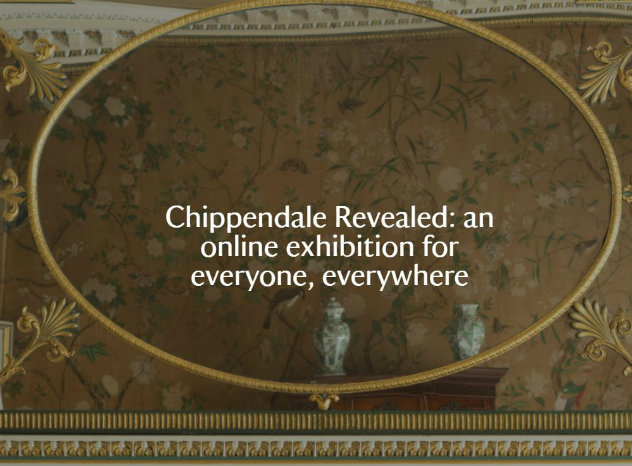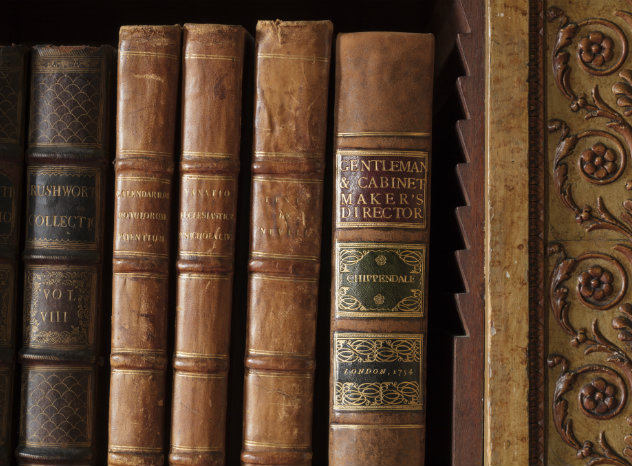Though based in London as an adult, Thomas Chippendale retained a lifelong connection with his native Yorkshire, where the county’s landed and aristocratic families were the source of some of his most significant and lucrative commissions.
Sir Rowland Winn, 5th Baronet (1739 – 1785) and his wife, Sabine d’Hervart (1734 – 1798) were no exception. Immediately upon inheriting Nostell Priory in 1766, Sir Rowland gave notice to his father’s architect, James Paine (1717 – 1789), and instead recruited Robert Adam (1728 – 1792) to re-design the new house. It was almost certainly Adam who introduced Chippendale to the Winns, and thereby began an association which would last for over twenty years.
The story of Chippendale’s relationship with the Winns is well known. Chippendale supplied a particularly wide range of goods and services, not only making furniture - including picture and pier glass frames - but also supplying textiles and wallpapers, and arranging for men to clean and mend furniture. Surviving correspondence shows that the commission was complicated by delays, disputes and unpaid bills: Chippendale was, at all times, addressed by Sir Rowland as an inferior. Nonetheless, the furniture that Chippendale supplied was some of the finest he ever made, and the collection encompasses most types of furniture that Chippendale is famous for, including marquetry and japanned furniture, as well as furniture made in a more sober style, of solid timber. Some of the furniture – like the mahogany counter – was made bespoke for Sir Rowland and Sabine. In addition, the collection at Nostell Priory is notable because it includes furniture which may potentially have been made by Chippendale for secondary or servants’ rooms: far less precious at the time but much more difficult to identify in accounts and so extremely rare now. Some of these secondary pieces are illustrated here for the first time.
The furniture supplied by Chippendale at Nostell was the subject of a series of articles by Lindsay Boynton and Nicholas Goodison in the late 1960s, articles which also published transcriptions of the large and rare corpus of letters, lists and bills which document the commission. [1]
Christopher Gilbert also described Chippendale's involvement at Nostell Priory, and recorded the related surviving written evidence, in his two-volume The Life and Work of Thomas Chippendale, published in 1978, which quickly became the ‘Bible’ for Chippendale studies. [2] The recent work of Kerry Bristol has shown that some of the furniture that survives at Nostell Priory was, in fact, made for the Winns' London townhouse at 11 St James’s Square, and probably only came to Nostell after its contents were sold following Sir Rowland’s death in 1785. [3] The relationship between the furniture made for the London house and for Nostell Priory has not yet been fully resolved and the picture is further complicated by the fact that some of the furniture at Nostell supplied by Chippendale has left the house: an auction of goods was held after the death of the 6th Baronet in 1807, for instance. It is useful, then, to remember that there were several phases to the Winns’ commission, beginning with the supply of furniture to the London house, followed by a period when both Nostell and St James’s Square were being furnished, while the final phase probably focused on the production of furniture solely for Nostell Priory.
Notes
[1] See, in particular, L. Boynton & N. Goodison, ‘Thomas Chippendale at Nostell Priory’, in Furniture History 4 (1968), 10 – 61; L. Boynton & N. Goodison, ‘The Furniture of Thomas Chippendale at Nostell Priory – I’, in The Burlington Magazine, Vol. III, No. 794 (May, 1969), 279 - 85; L. Boynton & N. Goodison, ‘The Furniture of Thomas Chippendale in Nostell Priory – II’, in The Burlington Magazine, Vol. III, No. 795 (June, 1969), 351 – 60.
[2] C. Gilbert, The Life and Work of Thomas Chippendale (2 vols., London, 1978).
[3] K. Bristol, ‘A Tale of Two Sales: Sir Rowland Winn and No.11 St James’s Square, London, 1766-1787’, in History of Retailing and Consumption 2.1 (2016), 9 – 24, and see a forthcoming article in Furniture History, Vol. LIV (2018).



